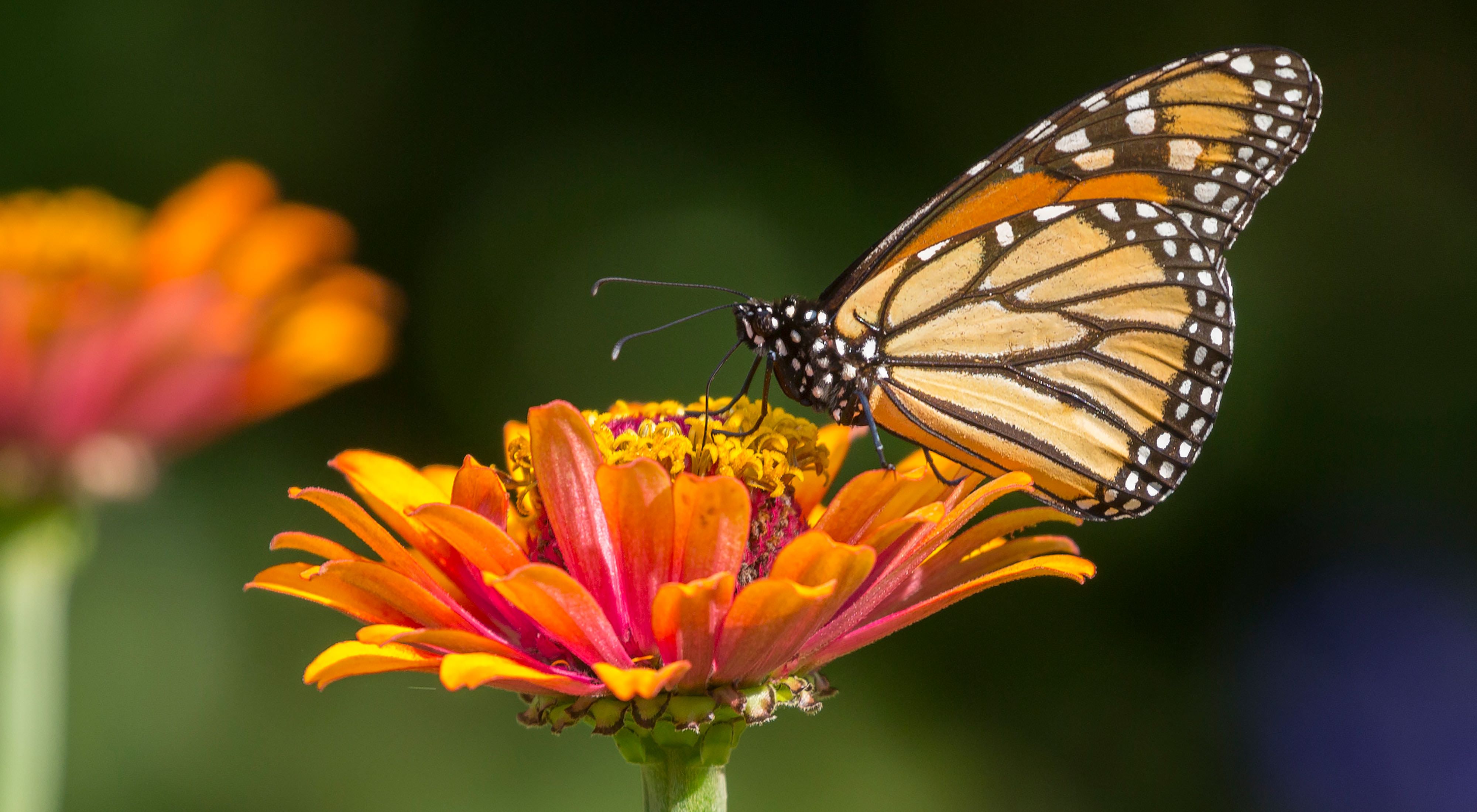Monarch Butterflies Bring Together Conservation and Culture Between U.S. and Mexico
Preserving the monarch butterfly and its unique migration across North America protects a cultural icon.
Every fall, as temperatures begin to drop in North America, monarch butterflies from as far north as Canada set out on a migration to warmer, southern climates.
The bright orange and black butterflies flap and glide from asters and goldenrods to coyote bush and rabbitbrush, traveling up to 100 miles per day. They are bound south, instinctively seeking the forests that offer the perfect conditions for overwintering.
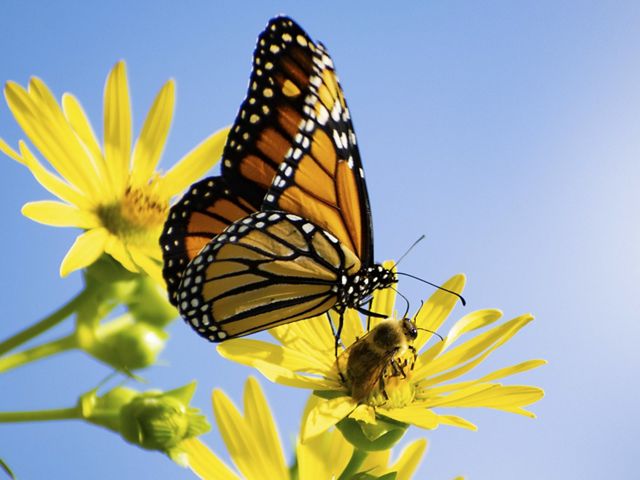
As the only butterfly species that completes a two-way migration, the monarchs will begin their return to the north in the coming spring. Individual butterflies live four to five weeks on average, so it will be their descendants—most likely their great-great-grandchildren—that will reach the northern states and complete this epic journey.
But monarch butterflies and their migration are now threatened by temperature changes, drought, and other climate change impacts. A long-term decline in numbers among eastern and western populations shows how vulnerable monarchs are in North America.
As pollinators, the monarch butterfly migration across the continent provides an invaluable service, essential for many ecosystems to thrive. It is thanks to pollinators, such as butterflies, bees, and other insects, that we have many of the flowers and dietary staples that we enjoy, like squash and blueberries.
Monarchs have another irreplaceable role across North America—that of a cultural icon.
Cultural Significance of Monarch Butterflies in Mexico
Among many Mexican communities in the Midwest and eastern United States, the monarch butterfly migration to Mexico is symbolic.
The butterflies that embark on a 3,000-mile southbound journey were born in the United States and have never been to Mexico. And yet, they are driven by environmental factors to glide south until they reach the oyamel fir forests of Mexico, mainly in Michoacán.
“In Mexico, even before the Spanish colonization, you could see images of butterflies through stone carvings and paintings of Indigenous groups,” said Joel Perez-Castaneda, Project Director for The Nature Conservancy (TNC) Indiana.
Quote: Joel Perez-Castaneda
In some stories, they are the returning souls of loved ones. In others, butterflies are returning warriors that were killed in battle.
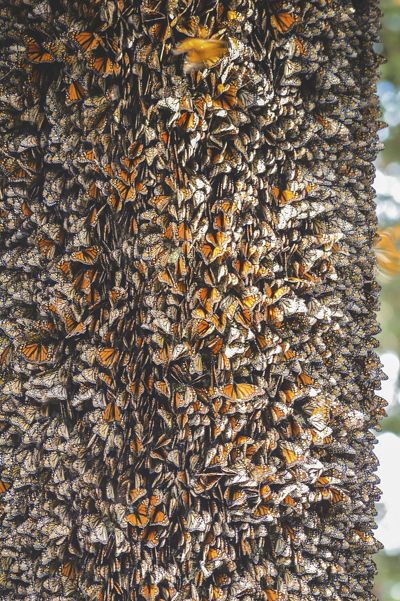
“These butterflies were part of that culture. To this day, in cultural celebrations, you can see the bright orange, black and white colors, hear the references in songs, and see the dances that mimic the butterfly’s movements.”
Adding to the mystique of thousands of butterflies funneling into the Mexican forests every fall is the fact that monarchs arrive around the same time when Día de los Muertos (Day of the Dead) is celebrated in early November.
“There are many legends and myths about monarchs and other butterflies, a lot of times tying them to the souls of their ancestors,” said Perez-Castaneda.
“In some stories, they are the returning souls of the loved ones. In others, butterflies are returning warriors that were killed in battle. The truth is that a lot of Indigenous groups believe that, even after passing on, their souls lived through nature and the environment. It says a lot about how much they really appreciated nature and its surroundings and cared for it.”
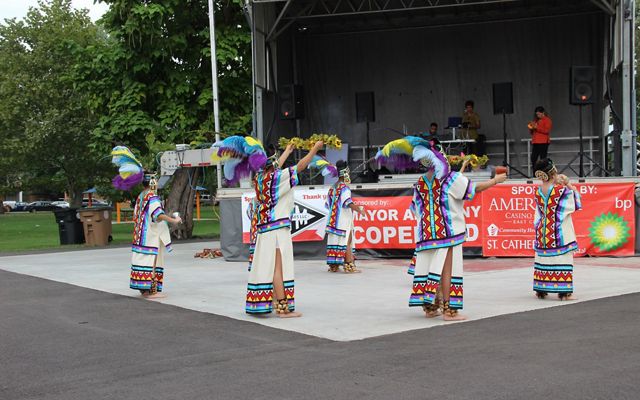

Preserving and Celebrating the Monarch Butterfly Journey
Across many states in the U.S., from Florida to Indiana, conservationists lead diverse and complementary efforts to protect the monarchs—from creating butterfly gardens where monarchs feed or lay their eggs, to preserving the lands they visit and pollinate during their migration.
“Northwest Indiana has a strong Mexican community presence, since many Mexicans moved to the area from Mexican states such as Michoacán, where the monarch overwinters,” Perez-Castaneda said.
In East Chicago, Indiana, The Nature Conservancy and its partners are not only engaging with the community to protect the butterfly, but also uniting in celebrating the monarch.
El Festival de la Monarca (The Monarch’s Festival) is a community event that occurs in September, while the butterflies are migrating through northwest Indiana on their way to Mexico. The celebration includes educational activities for people of all ages, as well as music, art, and dance.
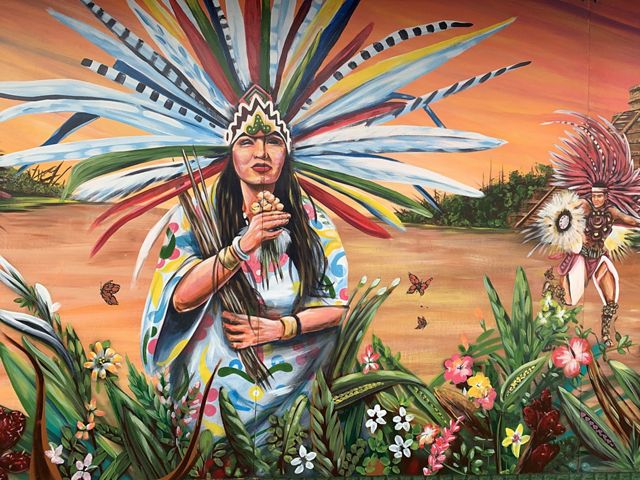
“All it took is for us to pay attention to the community to realize that the love of the monarch was already there,” Perez-Castaneda said. “You can drive around East Chicago and see businesses with images of the butterfly, from ice cream shops to restaurants. We want to connect residents to the natural areas around them and guide them on how they can support the monarch and other pollinators through native gardening, local conservation, learning about the monarchs and taking other actions. This Festival is the place where culture meets science and serves both nature and people.”
In previous years, the festival has offered a webinar about native plants, a monarch-themed window decorating contest, field trips, and a bilingual hike in English and Spanish.
Although the monarch is an enduring symbol among many communities, during recent decades the presence of this species at overwintering sites in Mexico has declined significantly. Populations in North America have decreased from approximately one billion in 1996 to only about 100 million in 2016.
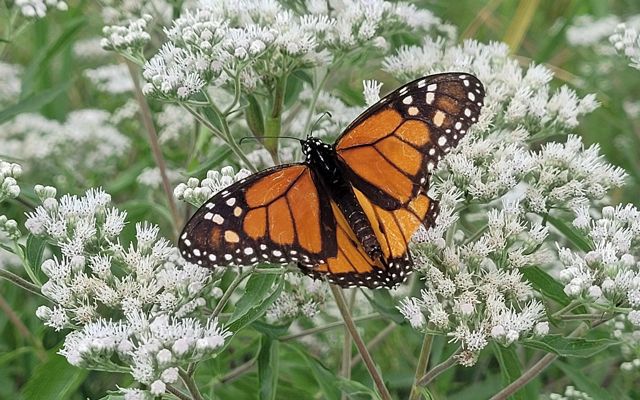
Support the monarch & help preserve its migration
- Explore TNC’s work to support monarchs in Florida, Oklahoma and Nevada.
- Plant a pollinator garden in your home or community.
- Support science education in your schools with Nature Lab.
We All Need Thriving Pollinators
Declining monarch populations across North America could be a sign that other elements of their habitats, such as wildflowers or other pollinators, might be fading too. We need to protect the balance and biodiversity of our natural ecosystems for humans and nature to thrive together.
The disappearance of large areas of native plant habitats is a major contributor to the decline of pollinator populations worldwide. Another major factor is climate change. For monarchs, if temperatures get too warm during spring, they might migrate farther north than before. Then when winter comes, the longer trip to overwintering sites in Mexico could overtax them and decrease their reproduction.
Changes in the monarchs’ migration patterns impact diverse ecosystems across the continent, and ultimately affect our human food systems, too. Although butterflies are among the more noticeable—and charming—pollinators when they visit a garden or field, bees, hummingbirds, moths, and bats also play an important role pollinating many food crops, as well as 75% of the world’s flowering plants.
